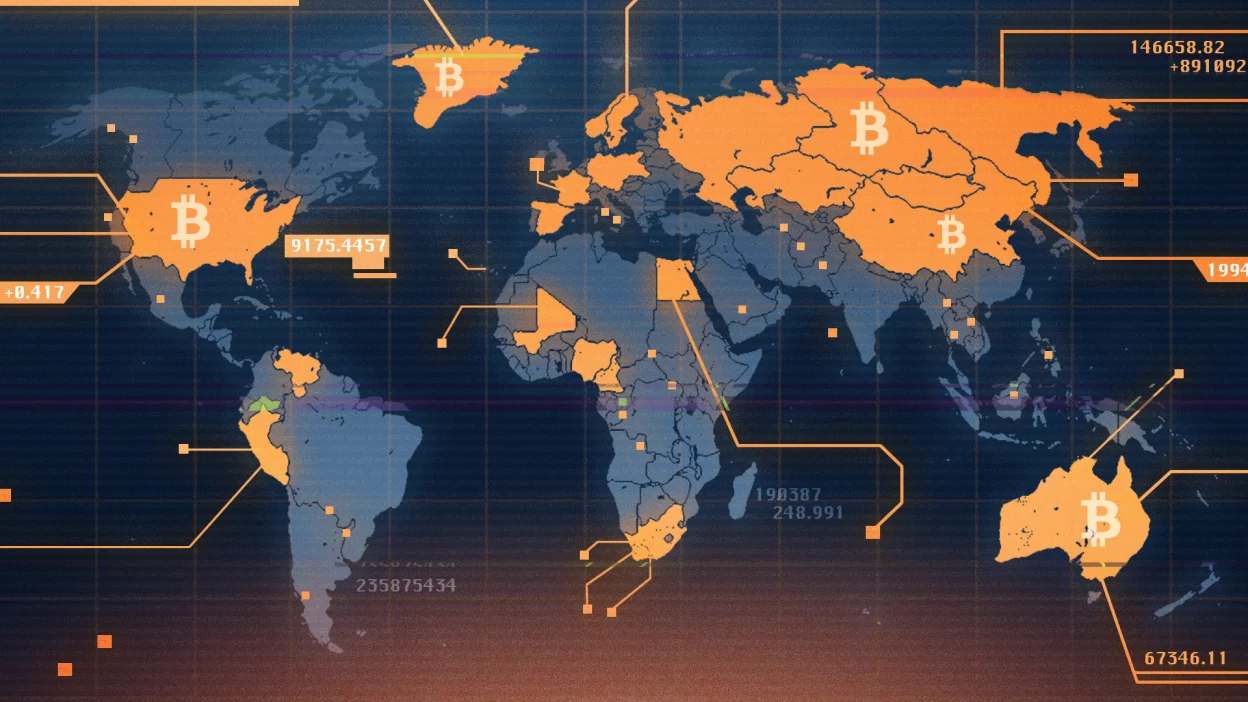
Which countries use crypto the most?
This means that aggregated user data, such as the number of unique addresses or the number of daily transactions, is freely available online. But cryptocurrencies are also designed to prioritize privacy, so breaking down this data to understand usage by demographic or country is challenging, but not impossible. We explain why this is the case, general solutions, and summarize the best available numbers on which countries have adopted cryptocurrencies the most.
Why is it difficult to measure cryptocurrency adoption by country?
Bitcoin, the first cryptocurrency, was designed to serve as a new form of money and prioritized the following key features:
- No central authority
- Open to all
- No geographical restrictions
- Private and pseudonymous
- Resistant to all types of censorship
In practice, this means that you don’t have to create an account to send or receive bitcoins, as you would with a bank or payment service provider. In fact, you don’t need any personal data information you information .
All transactions are stored in a shared database on a decentralized computer network: the Bitcoin blockchain. Transactions contain no private data or IP addresses. This is hard for newcomers to the world of web 2.0 to understand, where we so regularly give out some personal information and let online services know so much about us, including our country of origin.
Many of the thousands of Bitcoin-inspired cryptocurrencies work in a similar way. This makes it difficult to figure out where most of the transactions take place; but not impossible. This is due to the pseudonym concept.
How to evaluate the use of cryptocurrencies by country
The pseudonym is one of the least understood aspects of cryptocurrency. A pseudonym is a consistent identifier that is not your real name, but can reveal your real name by association.
As mentioned above, you don’t need to create an account to use Bitcoin. All you need is a Bitcoin wallet that creates an address, like an email address, that can send and receive money.
There is no identifying information in the address. But if you include your Bitcoin address in your Twitter profile, for example, as many people do, and your Twitter account identifies you, it’s easy to combine those two pieces of information, revealing you as the owner of that Bitcoin account.
The same goes for companies that serve the crypto ecosystem, the main one being exchanges. While you don’t need to create an account to use Bitcoin, the most common way to buy one is through a centralized cryptocurrency exchange where you need to create an account and provide your credentials.
Exchanges act as custodians of cryptocurrencies on behalf of their customers. They have ultimate control over the addresses where funds are held, but give their clients access to their funds through a website or app and personal account.
Exchanges publicly share information about these deposit/withdrawal addresses, so it’s not difficult to connect an exchange with multiple addresses whose operation is freely available, since the encryption is open source.
Connect the dots
An entire industry has grown up to derive these patterns and behaviors from the use of blockchain. Blockchain analytics uses data science to create connections between known entities, such as exchanges, and cryptographic addresses to which they can be publicly linked.
Exchanges are companies that protect their users’ data, so to break down an exchange’s data volume by country or demographics, blockchain analysts have to combine it with other data sources and make some assumptions.
Here’s how one blockchain analytics firm, Chain analysis, connects the dots. They take known cryptographic activity and combine it with web traffic methodology.
The index is used because otherwise the data would only show countries with high GDPs and tell us nothing we didn’t already know. Therefore, these three aspects of traceable cryptographic activity are combined to create an overall index.
- total value of cryptocurrencies received by country
- cryptocurrencies traded by retail cryptocurrency investors (transactions < $10,000)
- The amount traded on a P2P exchange
These three metrics are then weighted by per capita purchasing power parity (PPP), which measures the ability of an individual in a given country to purchase a given “basket” of goods.
The Web Traffic Methodology takes the geographic distribution of web traffic on each exchange from public website tracking resources, such as similar web, and combines it with other known factors:
- Time zone encryption activity
- Fiat swap pairs offered
- A range of languages offered
- Where is the exchange office
- The information is provided in labels provided to cryptographic addresses
If that sounds like a lot of guesswork, it is. The approach that Similar Web uses to determine where traffic to a particular website is coming from is also not an exact science. The approach ignores the use of VPNs and gives equal weight to all traffic to the hub, when in reality there are only a small fraction of active users and many bots.
What Chainalysis gets is the best guess for the Global Grassroots Crypto Adoption Index based on their model and all of its assumptions.
Top 10 crypto assets
Chainalysis’ “Geography of Cryptocurrency Report for 2020” ranked countries according to their methodology as follows: Vietnam, India, Pakistan, Ukraine, Kenya, Nigeria, Venezuela, United States, Togo, Argentina
